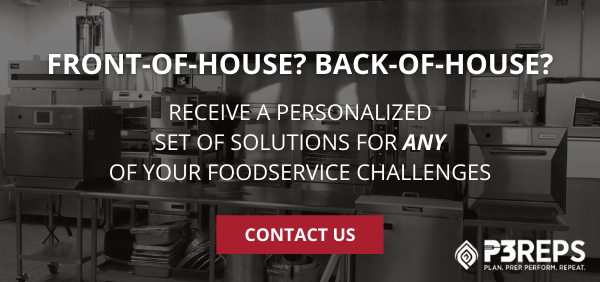
There's a slow shift occurring in the foodservice industry where operators are moving away from gas-powered equipment in favor of ventless, induction, and electric units. There are various causes that are promoting these shifts including the cost of expensive HVAC overhead and ductwork, the effects gas-powered units can have on the environment, general staff safety, and even regulations. Let's explore the turn to ventless, electric, and induction.
Many of these new appliances use filters to clean the air before recirculating the air back into the kitchen. While the transition is somewhat slow, it seems to be making larger strides as more and more progressive restaurants are catching up.
Benefits Of Using Ventless
Going ventless simply makes sense in the foodservice industry. There are several benefits associated with using ventless appliances. Smaller spaces for restaurants seem to be trending at the moment due to higher rates per square foot. In addition, a shrinking labor pool and higher operating costs have all contributed to the shift in the foodservice industry. Ventless cooking eliminates the need for expensive ductwork and seems to be a lot healthier for the environment than traditional gas units.
Restaurant owners are now required to do more with less space. Hence, the need for appliances that have smaller footprints. In addition, ventless appliances can better accommodate smaller kitchens in terms of layout and design. While most gas appliances produce by-products, such as steam, heat, smoke, and odor, that necessitate the use of a ventilation system, ventless appliances do not produce the same by-products, making them ideal for a small space wishing to reduce its carbon footprint.
Benefits Of Using Induction
When it comes to gas cooking, only about 30 to 40% of the heat is transmitted to the cookware and used to heat up food. With induction cooking, you can rest assured that 100% of the energy is utilized, resulting in more consistent and evenly distributed heat throughout the cooking process.
One of the major benefits of induction cooking is that meal preparation times are reduced due to the fact that heat is transferred directly to the cookware as opposed to the cooktop, as is the case with gas cooking or other methods of food heating. In addition, induction cooktops allow the user to better control the temperature, which results in better, more consistent, and more delicious results every time.
Induction cooktops are much easier to clean thanks to the smooth glass top. When using induction cooktops, the heat is transferred directly to the cookware as opposed to the cooktops, and the heating element is cooled down almost immediately after cooking. Which makes wiping it down a breeze and quite safe.
One of the major benefits of using induction cooktops is the safety aspects of these appliances. As previously mentioned, induction cooktops heat the cookware as opposed to the top of the appliance, which means that the surface will not heat up until it comes into contact with the cookware. In addition, in comparison to other traditional gas or electric cooktops, an induction cooktop cools down much faster.
In Conclusion
When narrowing the benefits down to safety, environmental concern, cost-effectiveness, and efficiency, it makes sense to make the switch. The foodservice industry is a fast-paced industry that is always evolving and looking for faster, safer, more effective, and efficient ways of producing healthy meals that patrons will come back to time after time. In addition, patrons are much more environmentally aware than in previous years. Knowing that a restaurant is pulling its weight in the fight against climate change may in fact promote higher levels of loyalty amongst the clientele.





